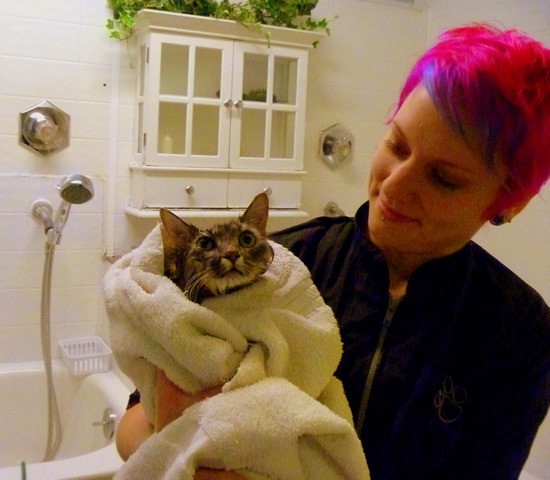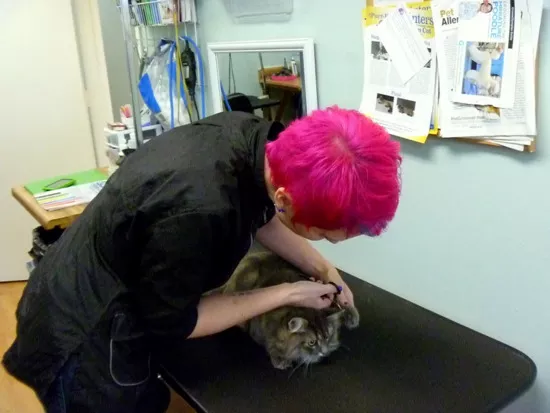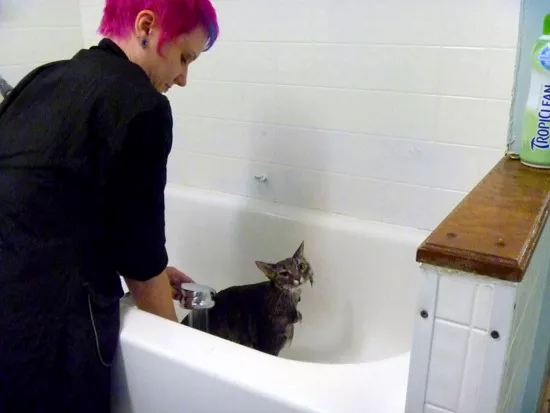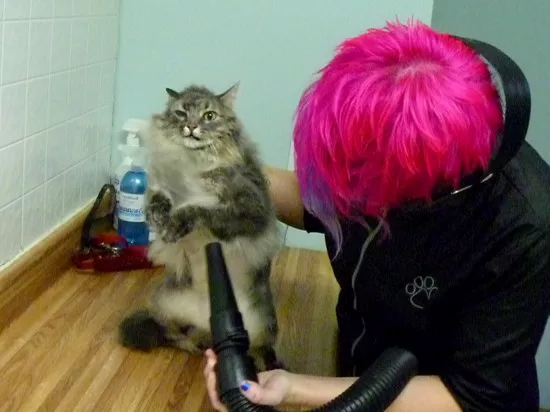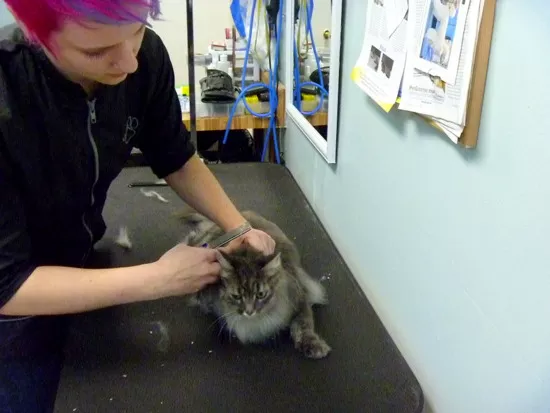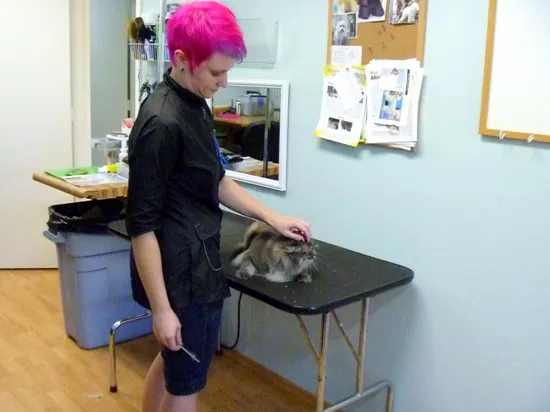Stephaney Kemper is a professional cat groomer, the only cat groomer in Missouri certified by the National Cat Groomers Institute of America in Greenville, South Carolina. She works at Dogs in Suds Grooming in St. Charles.
And why, you ask, would anybody voluntarily become a cat groomer? It sounds like the worst animal-related job in the entire world, except for maybe masturbating elephants. Except that elephants don't have claws.
Kemper, however, likes her job. She even prefers grooming cats to grooming dogs. "It's more of a challenge," she says. "You can't ever trust a cat. They're very capable of scratching and are not reserved about biting. They can inflict a lot of damage."
A cat groomer is a bit of a psychologist, a bit of a nurse. Timid cats, especially ones who hide their fear with a show of bravado, need to be cuddled. Truly aggressive cats need to be dunked right away. "If you wet them down," Kemper explains, "they wilt."
It's true. There's nothing quite so defeated-looking as a wet cat.
But isn't the beauty of keeping a cat for a pet that it's self-cleaning, so you don't have to take it to the groomer? Not exactly.
"Everyone thinks cats groom themselves," says Kemper. "Cats don't groom. They lick themselves. They can't trim their own nails" -- another of the more fun chores of cat ownership -- "or clean their own coats. Cats have very oily skin, and when they lick their hair, the oil stays in the hair, which leads to tangles and mats. Also, dander, the thing that bothers people who are allergic to cats, is actually in their saliva, but when cats lick themselves, it gets into their hair."
Kemper doesn't wear any protective gloves when she works, and she doesn't muzzle the cats or cover their claws with vet wrap. The muzzle and the vet wrap cover up places that need to get clean -- cats' feet are especially dirty -- and the gloves make her clumsy. She does, however, make sure to wear shorts and flip-flops so cleanup is easier if a scared cat pees on her. So far, in her year-and-a-half of cat grooming, she's only had to turn away one cat for bad behavior. (In retrospect, though, she thinks she misjudged the cat's personality and body language and should have handled it differently.)
Kemper, who is 25, graduated from cat grooming school last month, after a two-week intensive program at the National Cat Groomers Institute headquarters in South Carolina. In order to become a certified cat groomer, she needed to pass tests on basic feline health and anatomy, cat handling and the personalities and coat types of each of the 41 different breeds officially recognized by the Cat Fanciers Association. Prior to going to school, however, she had been studying on her own for more than a year, practicing primarily on her own cat, Martini. Martini, a gray domestic shorthair, is undoubtedly the cleanest cat in the entire St. Louis metropolitan area, although familiarity with the grooming process doesn't make her like it any more than she did before.
Yesterday afternoon, Kemper and Martini demonstrated for Daily RFT the basics of cat grooming. Stage One: Nail Clipping.
Stage Two: The Bath. Kemper uses a degreasing shampoo, and each cat gets two lathers and rinses.
Stage Three: Drying. This is, incidentally, Martini's least favorite part, though she meowed pretty constantly through the bathing. Kemper plans to build a dryer cats can sit in, sort of like one of the hooded hair dryers you find at a beauty salon. She thinks the cats will prefer that to having a blower aimed at them.
Stage Four: The Comb-Out.
Stage Five (Unofficial): Begging Forgiveness. Kemper claims cats have short memories, but Martini appears to bear some lingering resentment.
Kemper recommends that cats have a regular grooming schedule, every six to eight weeks for a long-haired cat,up to every ten weeks for a shorter-haired cat. She says that the biggest mistake most cat-owners make trying to groom the cats at home is trying to cut out mats with scissors.
"Cats and scissors don't mix," she says. "Cats are unpredictable. A cat can move suddenly, and instead of cutting fur, you've cut the cat." The only scissors Kemper ever uses are kindergarten safety scissors, and only for trimming hair that covers the eyes of Persian cats. (If your cat has matted fur, she suggests picking it out with a comb, or shaving the patch of fur off completely with clippers.)
"People should understand the value of getting their cats groomed," she says. "They say that cats groom themselves and hate water, but it's important not only for vanity -- you like your cat to look good -- but also for health. Our hands are all over the cat's body. Sometimes we see more than the vet does."
That does not mean, however, that the cat has to like it.

